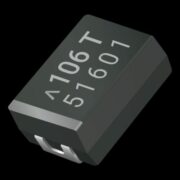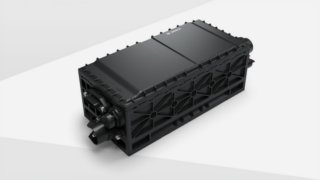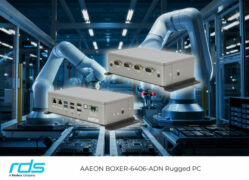There are several leading proximity sensor technologies; each with very different operating standards and different strengths when it comes to determining detection, distance or proximity. This article outlines four of the possible options for compact, fixed embedded systems and their basic principles of operation to help engineers determine which one to select depending on their design requirements.
Proximity sensors provide an accurate method of detecting an object’s presence and distance without having any physical contact. The sensor emits either an electromagnetic field, light, or ultrasonic sound wave that reflects off, or passes through, an object and returns to the sensor. A significant benefit that proximity sensors have over conventional limit switches is that they are more durable and can last longer, as there no mechanical parts.
When reviewing the ideal proximity sensor technology for a particular application, cost, range, size, refresh rate or latency, and material effect must all be considered and put into the context of what is the most important for the design.
Ultrasonic
As the name suggests, ultrasonic proximity sensors emit an ultrasonic pulse of sound, called a ‘chirp’, to detect an object’s presence, and can also be used to calculate the distance to the object. They consist of a transmitter and receiver, and their function is based on the principles of echolocation (Figure 1).
 Figure 1: How an ultrasonic sensor operates. (Image source: CUI Devices)
Figure 1: How an ultrasonic sensor operates. (Image source: CUI Devices)
By measuring the length of time it takes for the chirp to reflect off a surface and return, often referred to as the ‘time of flight’ (ToF), the sensor can determine how far away the object is. Usually, the transmitter and receiver are near each other, but utilizing echolocation will still work when the transmitter and receiver are separated. In some cases, the transmit and receive functions combine into a single package; these devices are known as ultrasonic transceivers.
By using sound, rather than electromagnetic waves, ultrasonic sensor readings are unaffected by the color and transparency of an object. They also have the added benefit of not producing light, which makes them ideal for dark environments or even those that are brightly lit. The sound waves create a spread over time and distance, much like a ripple in the water, and this widening of the detection area, or the field of view (FoV), can be regarded as a strength or a weakness depending on the application. However, with a good level of accuracy, a fairly high refresh rate, and the potential to transmit hundreds of chirps per second, ultrasonic proximity sensors can provide a cost-effective, versatile, and safe solution.
One fundamental drawback of ultrasonic sensors is changing air temperature will affect the speed of the sound wave, which will reduce the accuracy of measurements. However, this can be counterbalanced by measuring the temperature across the distance between the transmitter and receiver and adjusting the calculations accordingly. Other limitations include the fact that it is impossible to use ultrasonic sensors in a vacuum, where there is no air to transmit the sound. Soft materials will also not reflect the sound as efficiently as hard surfaces, which can impact the accuracy. Finally, although ultrasonic sensor technology follows a similar concept to sonar, it does not work underwater.
Photoelectric
For detecting the presence or absence of an object, photoelectric sensors are a practical option. They are usually infrared-based, with typical applications including garage door sensors or occupant counting in stores, though they are suitable for a wide range of other industrial applications.
There are several ways to implement photoelectric sensors (Figure 2). Through-beam uses an emitter on one side of an object with a detector opposite. If the beam breaks, then this indicates that an object is present. A retroreflective implementation is where the emitter and detector are located together, while the reflector is opposite. Similarly, the diffused arrangement also co-locates the emitter and detector, but, instead, the emitted light reflects off any object being detected. This setup does not make it possible to measure distance.
 Figure 2: Photoelectric sensors – through-beam, retroreflective and diffuse-reflective. (Image source: CUI Devices)
Figure 2: Photoelectric sensors – through-beam, retroreflective and diffuse-reflective. (Image source: CUI Devices)
Setting up a photoelectric sensor in the through-beam or retroreflective configuration makes them suitable for applications requiring an extended sensing range with low latency. However, as they need to be carefully mounted and aligned, system installation in busy environments can be challenging. Diffuse type implementations are more suitable for detecting small objects and can also be mobile detectors.
Photoelectric sensor setups can be used in dirty environments, often found in industrial settings, and typically offer a longer lifespan than other alternatives, due to possessing no moving parts. As long as the lens is protected and kept clean, then the performance of the sensors will be maintained. Although they can sense most objects, problems may arise for transparent and reflective surfaces and water. Other limitations include accurate distance calculation and, depending on the optical source, detecting objects of a specific color, for example, red if using IR.
Laser rangefinders
Historically an expensive option, Laser range finding (LRF) has recently become a more viable solution for many applications. The high-power sensors operate on the same principle as ultrasonic sensors but use a laser beam instead of sound waves.
As photons travel at such a high speed, calculating the ToF accurately can be difficult. Here, techniques such as using interferometry can help maintain accuracy while reducing cost (Figure 3). Another benefit of laser range finder sensors is that, due to the utilization of the electromagnetic beam, they usually have an incredibly long-range (up to thousands of feet) and the response time is minimal.
 Figure 3: Laser rangefinder sensor implementation using interferometry. (Image source: CUI Devices)
Figure 3: Laser rangefinder sensor implementation using interferometry. (Image source: CUI Devices)
Despite the ultra-low latency and range capabilities of these sensors, they do have their own limitations. The lasers are power-hungry, which in turn means they are not a suitable option for battery-operated or portable applications, and there are safety issues to consider regarding ocular health. Another consideration is that the FoV is also relatively narrow, and, as with photoelectric sensors, they do not work well with water or glass. Despite the price for this type of technology reducing, it is also still one of the most expensive options available.
Inductive
Inductive sensors have been around for many years, but they are becoming more mainstream. However, unlike the other proximity sensing technologies, they will only work with metallic objects as they use a magnetic field for detection (Figure 4). A typical application would be a metal detector.
 Figure 4: How an inductive sensor works, (Image source: CUI Devices)
Figure 4: How an inductive sensor works, (Image source: CUI Devices)
The detection range can vary, depending on how the sensor is set up. A short-range application could be to count gear rotations by detecting when a gear tooth is present next to the sensor. Longer applications could be to count vehicles by embedding inductive sensors into a road surface or even to demonstrate the extreme distance the sensors can operate over – to detect space plasma. As a proximity sensor, inductive sensors tend to be used for very short-range applications and can provide extremely fast refresh rates due to being based on the principle of detecting differences in electromagnetic fields. They also perform better with ferrous materials, such as iron and steel.
Inductive sensors offer a cost-effective solution over a huge range. However, the limitations of what materials they can sense along with the fact that they are susceptible to a wide range of interference sources must be considered.
Conclusion
When considering all the implementation challenges for proximity sensing, ultrasonic sensors are often the best overall technology (Figure 5). Their low-cost, ability to detect the presence of an object, accurately calculate its distance, and ease of use are the winning attributes.
 Figure 5: Comparison of the four proximity sensor technologies (Image source: CUI Devices)
Figure 5: Comparison of the four proximity sensor technologies (Image source: CUI Devices)
For more information on ultrasonic sensors from CUI Devices, please visit: CUI Devices Ultrasonic Sensors











